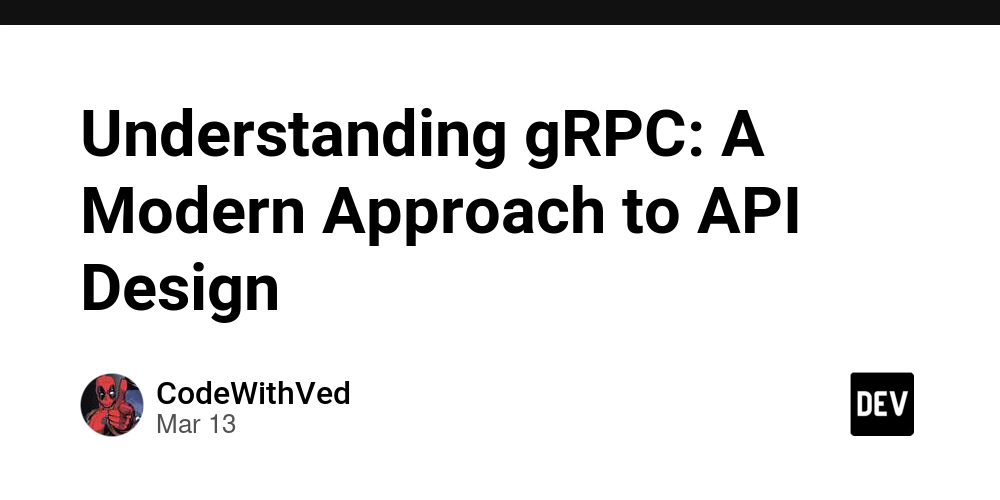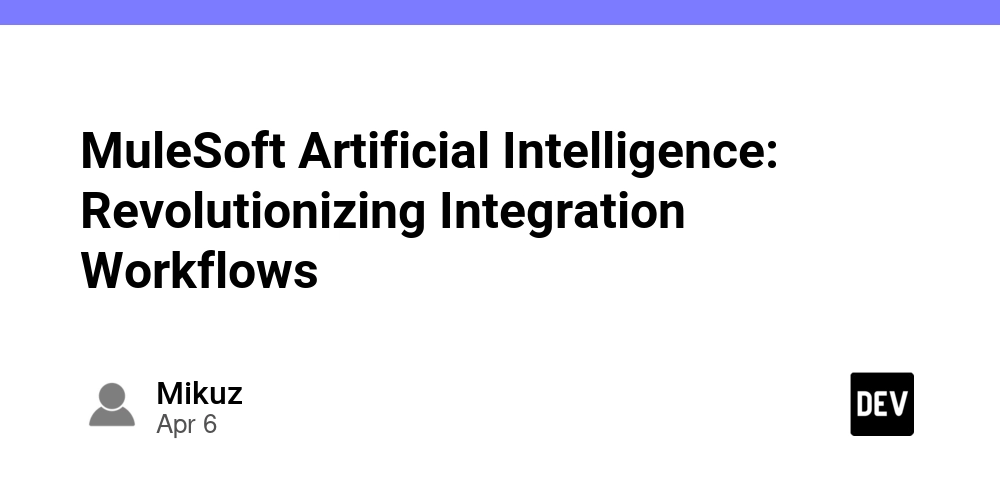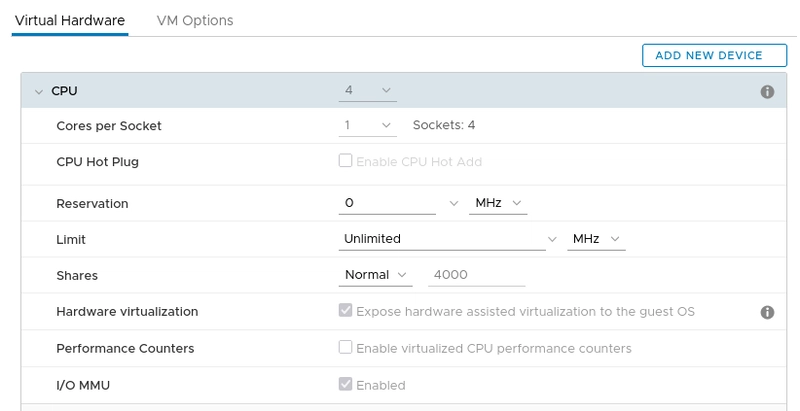Understanding gRPC: A Modern Approach to API Design
In the evolving landscape of API development, gRPC has gained traction as a high-performance alternative to traditional RESTful services, particularly in scenarios requiring speed and real-time capabilities. Developed by Google and now an open-source project under the Cloud Native Computing Foundation (CNCF), gRPC offers a fresh take on how applications communicate. So, what is gRPC, and why might it be the right choice for your next project? Let’s explore. What is gRPC? gRPC is a modern, open-source Remote Procedure Call (RPC) framework designed to simplify communication between client and server applications. Unlike REST, which focuses on resources and HTTP verbs, gRPC is service-oriented, allowing developers to define methods that clients can invoke remotely as if they were local functions. It leverages HTTP/2 for transport and Protocol Buffers (protobuf) as its interface definition language, delivering efficiency and flexibility across multiple programming languages. At its core, gRPC revolves around services—collections of methods with defined inputs (requests) and outputs (responses). For example, a UserService might include methods like GetUser or UpdateUser, each with explicit parameter and return types. Key Features of gRPC gRPC’s power lies in its robust feature set. Here’s what defines a well-implemented gRPC API: Protocol Buffers gRPC uses Protocol Buffers to define services and data structures. Protobuf is a compact, strongly typed serialization format that ensures consistency between clients and servers. Example: A User message might include fields like id, name, and email, guaranteeing structured data exchange. HTTP/2 Transport Built on HTTP/2, gRPC benefits from features like multiplexing (handling multiple requests over one connection), header compression, and server push, outperforming the HTTP/1.1 foundation of many REST APIs. Streaming Support gRPC offers four communication styles: Unary: One request, one response (like a typical API call). Server Streaming: One request, multiple responses (e.g., live data feeds). Client Streaming: Multiple requests, one response (e.g., data uploads). Bidirectional Streaming: Simultaneous request and response streams (e.g., chat systems). This versatility suits real-time use cases exceptionally well. Interoperability With support for languages like C++, Java, Python, Go, and more, gRPC enables seamless communication between services written in different tech stacks. Authentication and Security gRPC includes built-in SSL/TLS support and integrates with authentication protocols like OAuth and JWT, ensuring secure data transfer. Error Handling gRPC employs predefined status codes (e.g., NOT_FOUND, INVALID_ARGUMENT) and supports detailed error messages, simplifying debugging and error management. Advantages of gRPC gRPC brings several compelling benefits to the table: High Performance Thanks to HTTP/2 and Protocol Buffers, gRPC delivers low-latency, high-throughput communication, often surpassing REST in efficiency. Strong Typing and Code Generation Protobuf enforces a clear contract, and gRPC tools auto-generate client and server code, cutting down on manual coding and errors. Streaming Capabilities Native streaming support makes gRPC ideal for real-time applications like live updates or interactive systems. Language Interoperability Developers can mix and match languages across services without integration headaches. Built-in Features Load balancing, timeouts, and cancellation come standard, reducing reliance on external tools. Considerations When Using gRPC Despite its strengths, gRPC isn’t a one-size-fits-all solution. Here are some trade-offs to consider: Complexity Compared to REST, gRPC setup can be more intricate, particularly for teams new to Protocol Buffers or HTTP/2. Browser Support Direct gRPC calls from web browsers are challenging due to HTTP/2 and protobuf limitations. gRPC-Web offers a workaround by using a proxy, but it adds another layer to manage. Learning Curve Mastering Protocol Buffers and gRPC concepts requires an upfront investment in learning. Use Cases for gRPC gRPC excels in scenarios that leverage its unique strengths: Microservices Architectures Its speed and interoperability make it a go-to for communication between microservices. Real-time Applications Streaming capabilities shine in apps needing live data, such as financial dashboards, sports updates, or collaborative tools. Internal APIs For performance-critical internal APIs within an organization, gRPC’s efficiency and typing are hard to beat. Polyglot Environments Teams using diverse languages benefit from gRPC’s ability to bridge tech stacks effortlessly. Conclusion gRPC is a formidable framework for craft

In the evolving landscape of API development, gRPC has gained traction as a high-performance alternative to traditional RESTful services, particularly in scenarios requiring speed and real-time capabilities. Developed by Google and now an open-source project under the Cloud Native Computing Foundation (CNCF), gRPC offers a fresh take on how applications communicate. So, what is gRPC, and why might it be the right choice for your next project? Let’s explore.
What is gRPC?
gRPC is a modern, open-source Remote Procedure Call (RPC) framework designed to simplify communication between client and server applications. Unlike REST, which focuses on resources and HTTP verbs, gRPC is service-oriented, allowing developers to define methods that clients can invoke remotely as if they were local functions. It leverages HTTP/2 for transport and Protocol Buffers (protobuf) as its interface definition language, delivering efficiency and flexibility across multiple programming languages.
At its core, gRPC revolves around services—collections of methods with defined inputs (requests) and outputs (responses). For example, a UserService might include methods like GetUser or UpdateUser, each with explicit parameter and return types.
Key Features of gRPC
gRPC’s power lies in its robust feature set. Here’s what defines a well-implemented gRPC API:
-
Protocol Buffers
- gRPC uses Protocol Buffers to define services and data structures. Protobuf is a compact, strongly typed serialization format that ensures consistency between clients and servers.
-
Example: A
Usermessage might include fields likeid,name, andemail, guaranteeing structured data exchange.
-
HTTP/2 Transport
- Built on HTTP/2, gRPC benefits from features like multiplexing (handling multiple requests over one connection), header compression, and server push, outperforming the HTTP/1.1 foundation of many REST APIs.
-
Streaming Support
- gRPC offers four communication styles:
- Unary: One request, one response (like a typical API call).
- Server Streaming: One request, multiple responses (e.g., live data feeds).
- Client Streaming: Multiple requests, one response (e.g., data uploads).
- Bidirectional Streaming: Simultaneous request and response streams (e.g., chat systems).
- This versatility suits real-time use cases exceptionally well.
- gRPC offers four communication styles:
-
Interoperability
- With support for languages like C++, Java, Python, Go, and more, gRPC enables seamless communication between services written in different tech stacks.
-
Authentication and Security
- gRPC includes built-in SSL/TLS support and integrates with authentication protocols like OAuth and JWT, ensuring secure data transfer.
-
Error Handling
- gRPC employs predefined status codes (e.g.,
NOT_FOUND,INVALID_ARGUMENT) and supports detailed error messages, simplifying debugging and error management.
- gRPC employs predefined status codes (e.g.,
Advantages of gRPC
gRPC brings several compelling benefits to the table:
-
High Performance
- Thanks to HTTP/2 and Protocol Buffers, gRPC delivers low-latency, high-throughput communication, often surpassing REST in efficiency.
-
Strong Typing and Code Generation
- Protobuf enforces a clear contract, and gRPC tools auto-generate client and server code, cutting down on manual coding and errors.
-
Streaming Capabilities
- Native streaming support makes gRPC ideal for real-time applications like live updates or interactive systems.
-
Language Interoperability
- Developers can mix and match languages across services without integration headaches.
-
Built-in Features
- Load balancing, timeouts, and cancellation come standard, reducing reliance on external tools.
Considerations When Using gRPC
Despite its strengths, gRPC isn’t a one-size-fits-all solution. Here are some trade-offs to consider:
-
Complexity
- Compared to REST, gRPC setup can be more intricate, particularly for teams new to Protocol Buffers or HTTP/2.
-
Browser Support
- Direct gRPC calls from web browsers are challenging due to HTTP/2 and protobuf limitations. gRPC-Web offers a workaround by using a proxy, but it adds another layer to manage.
-
Learning Curve
- Mastering Protocol Buffers and gRPC concepts requires an upfront investment in learning.
Use Cases for gRPC
gRPC excels in scenarios that leverage its unique strengths:
-
Microservices Architectures
- Its speed and interoperability make it a go-to for communication between microservices.
-
Real-time Applications
- Streaming capabilities shine in apps needing live data, such as financial dashboards, sports updates, or collaborative tools.
-
Internal APIs
- For performance-critical internal APIs within an organization, gRPC’s efficiency and typing are hard to beat.
-
Polyglot Environments
- Teams using diverse languages benefit from gRPC’s ability to bridge tech stacks effortlessly.
Conclusion
gRPC is a formidable framework for crafting efficient, high-performance APIs, especially in distributed systems like microservices or real-time applications. Its use of Protocol Buffers, HTTP/2, and streaming sets it apart from REST, offering a modern approach to API design. However, its complexity and specific constraints—like browser compatibility—mean it’s not always the simplest choice.
By weighing its features, advantages, and challenges, you can decide if gRPC aligns with your project’s goals. For scenarios demanding speed, scalability, and real-time interaction, gRPC might just be the perfect tool in your API toolkit.









































































































































































![[The AI Show Episode 142]: ChatGPT’s New Image Generator, Studio Ghibli Craze and Backlash, Gemini 2.5, OpenAI Academy, 4o Updates, Vibe Marketing & xAI Acquires X](https://www.marketingaiinstitute.com/hubfs/ep%20142%20cover.png)



























































































































![[DEALS] The Premium Learn to Code Certification Bundle (97% off) & Other Deals Up To 98% Off – Offers End Soon!](https://www.javacodegeeks.com/wp-content/uploads/2012/12/jcg-logo.jpg)


![From drop-out to software architect with Jason Lengstorf [Podcast #167]](https://cdn.hashnode.com/res/hashnode/image/upload/v1743796461357/f3d19cd7-e6f5-4d7c-8bfc-eb974bc8da68.png?#)






































































































.png?#)




.jpg?#)
































_Christophe_Coat_Alamy.jpg?#)
 (1).webp?#)









































































































![Rapidus in Talks With Apple as It Accelerates Toward 2nm Chip Production [Report]](https://www.iclarified.com/images/news/96937/96937/96937-640.jpg)






































































































































